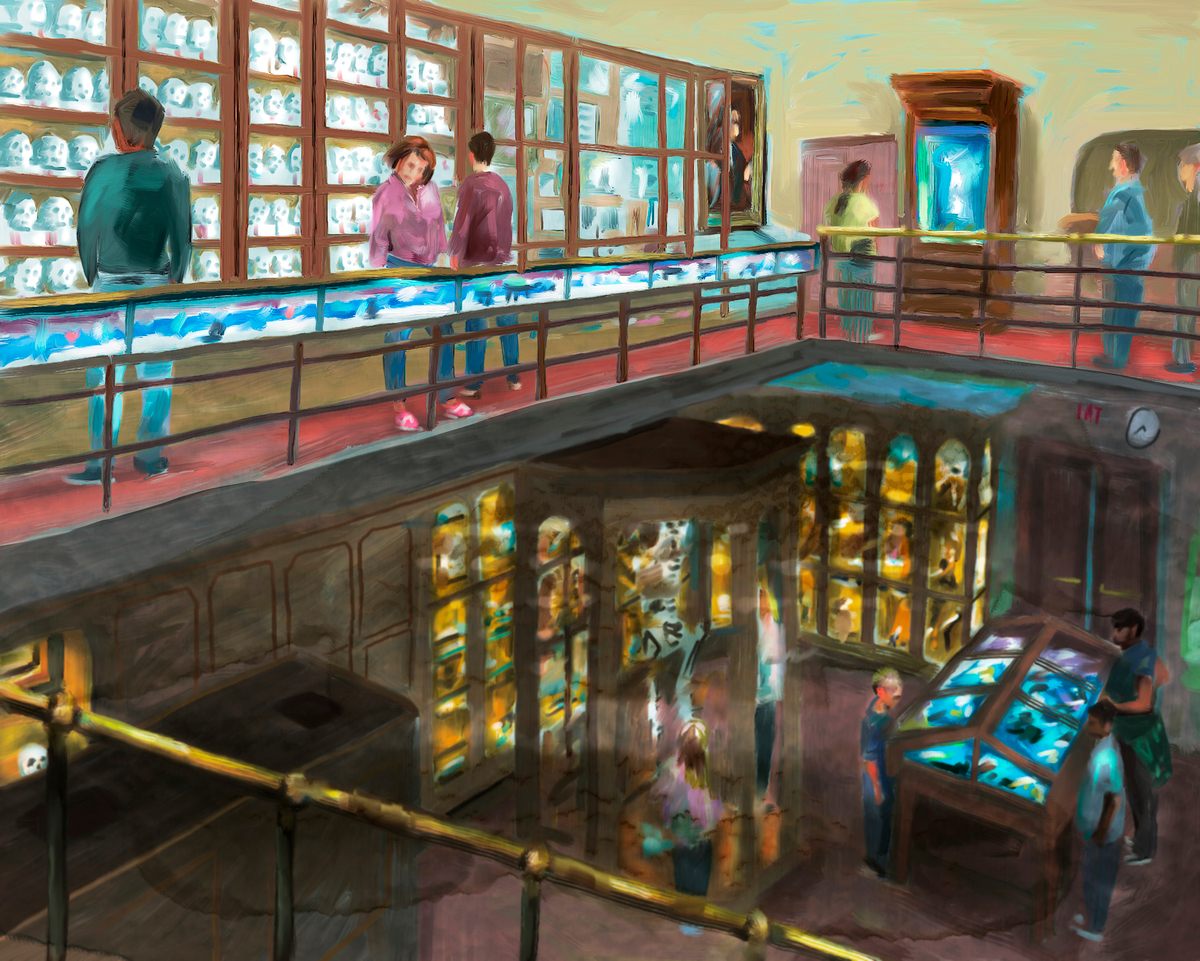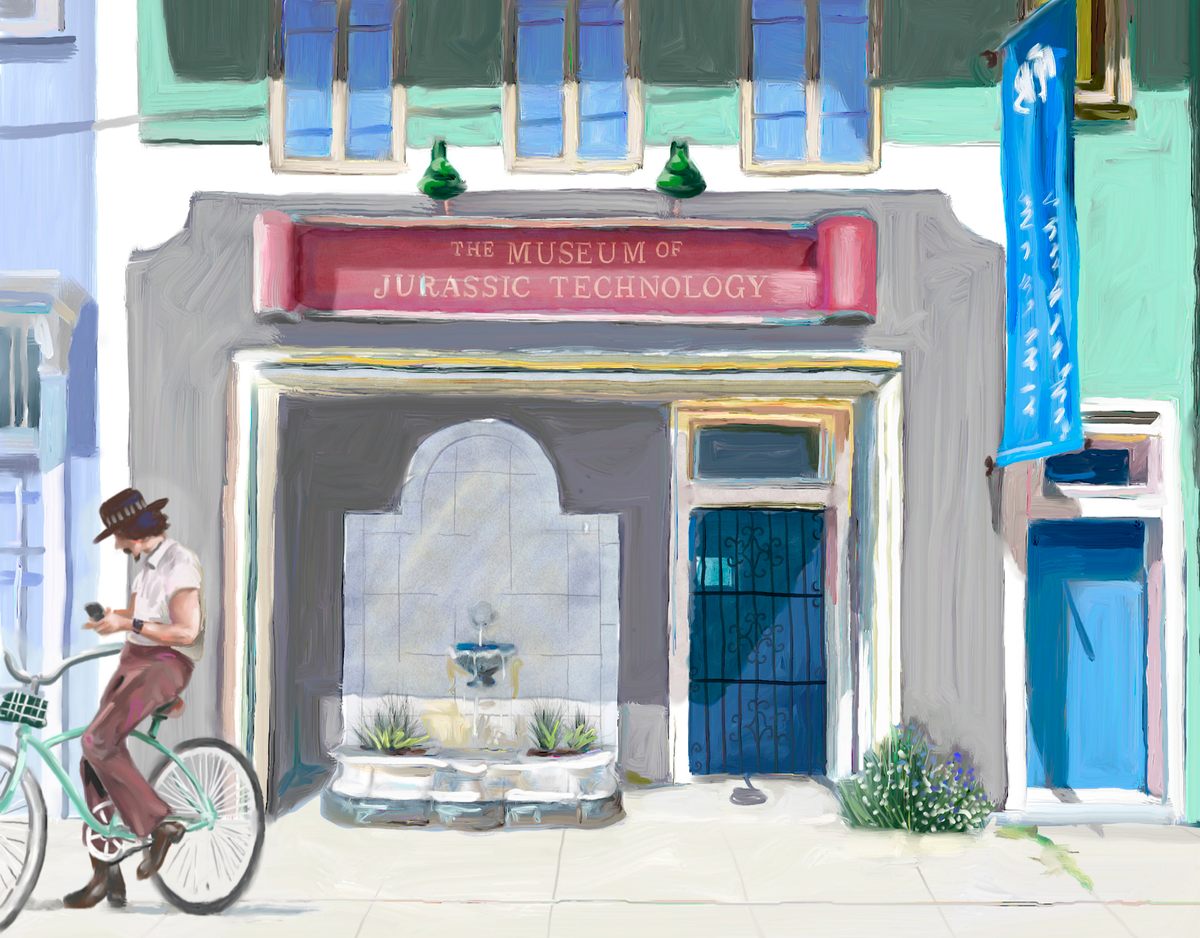Museums are reflections of everything we’ve created and accomplished up until now on this planet. These are really giant selfies. While researching museums, I heard literally hundreds of stories from museum lovers, museum curators, and tourists. Here are my top 10 weirdest and most fascinating museum stories.

Columbus Museum of Art
The Columbus Museum of Art is one of the most accomplished museums in the country and on the list of National Register of Historic Places. It includes some of the best late 19th- and early 20th-century American and European art. But all museums face challenges, as shared by Max Strauss, formerly from the collections and exhibition department.
“Each Spring we do Art in Bloom, where floral designers create arrangements based on pieces in the museum,” said Strauss. “In 2021 one floral designer thought that it would be a smart idea to have hundreds of live bees as a part of their floral display. Two hours after we opened, we got a call that the bees had escaped. Our boss, the manager for visitor experience and safety, regretted to inform us that she was deathly allergic to bees and unable to do much of anything, while my colleagues went to catch the bees. I stayed outside to keep more people from going in. The design was immediately pulled. The floral designer and her helpers felt so bad about what happened that they came back with honey lollipops and passed them out at the front desk. Great, except visitors are not supposed to have food or drinks in the museum and now every visitor was walking through the museum dripping honey all over the place. One family thought it would be appropriate to drip honey on one of the sculptures. That day will go on to live in Columbus Museum of Art infamy.”

Art Institute of Chicago
A painting made such an impression on a young comedian—Bill Murray—that it changed his mind regarding taking his own life. One of the oldest and largest art museums in the United States, Art Institute highlights include Georges Seurat’s A Sunday on La Grande Jatte, Edward Hopper’s Nighthawks, and America’s Mona Lisa: Grant Wood’s American Gothic, a painting that has been parodied and repurposed more than any other American piece of work since it came in third place at the 1930 Art Institute of Chicago Annual and acquired for its collection.
“I remember my first experience on the stage. I was so bad I just walked out, out on the street and started walking for a couple of hours and I realized I had walked in the wrong direction. Not just the wrong direction in terms of where I lived but the wrong direction in terms of the desire to stay alive, and I ended up in front of the Art Institute. I walked in and there is a painting, I think it’s called The Song of the Lark. It’s a woman working in a field and there is a sunrise behind her. I saw it that day and I just thought, ‘Well, look, there’s a girl who doesn’t have a whole lot of prospects but, the sun’s coming up anyway, and she’s got another chance.’ So I think that gave me some sort of feeling that I too, am a person, and I get another chance every day the sun comes up,” said Murray.

The Mob Museum
You want a total museum experience? And to show the whole family what a speakeasy is? Inside a museum packed with graphic violence? Head over to the thoroughly riveting Mob Museum, a former 1933 post office and federal courtroom that was bought for $1 with the condition it be used for something cultural…like a museum. Ten years and $42 million dollars later, leading museum designer Dennis Barrie (also involved with the International Spy Museum and the Rock and Roll Hall of Fame) created an immersive, engaging mob museum, which serenades visitors to Frank Sinatra singing “New York, New York” upon arriving.
Officially the National Museum of Organized Crime and Law Enforcement, this bilingual museum tells a bold and surprisingly compelling visual story of the war between the mob and the Feds. And it’s haunted. On the first part of the tour, there is a mock police lineup for tourists to take pictures, but this is the spot where more than one museum employee has seen a ghost. After touring all three floors, which contain horrific depictions of violence, you and yours will welcome a drink in the museum’s fully operational, and legal, speakeasy.

Mütter Museum
The Mütter Museum of The College of Physicians of Philadelphia started as a donation from surgeon Thomas Dent Mütter (1811–1859), who wanted to improve medical education. It displays anatomical specimens, models, and medical instruments to understand the mysteries and beauty of the human body. It’s now the United States’s largest museum of medical history.
The Mütter Museum is also where a very special relationship blossomed in the afterlife. From the moment Carol Orzel met Harry Eastlack at the Mütter in 1995, she was enchanted. Harry had been dead for 22 years, his skeleton on display since 1979. At that 1995 event, Orzel turned to her doctor and said, “When my time comes, I would like to hang next to Harry…only if my jewelry can be displayed, too.”

“Carol Orzel was a disability rights advocate with fibrodysplasia ossificans progressiva, one of the rarest diseases in the world,” said Erin Scheckenbach, director of development for the museum. Eastlack also had the disease. “In 2018 our staff gathered to greet her, in appreciation for Carol donating her body. Her skeleton is on display with her collection of tiaras, earrings, and brooches.”
Chapultepec Castle
The beautiful Chapultepec Castle in Mexico City, Mexico, which houses a fantastic collection of historic art, jewelry, murals, sculptures, and maritime hardware, is the site of two fascinating, timeless stories: Escutia’s Leap and Romeo and Juliet, one arguably real, one arguably fiction. The museum’s highlight is the unparalleled views of the city from the castle. Explorer James F. Elton wrote the views “can’t be surpassed in beauty in any part of the world.”

On September 13, 1847, the Niños Héroes (“Boy Heroes”) died defending the castle while it was taken by American forces at the Battle of Chapultepec, during the Mexican-American War. Legend has it that the last of the six, Juan Escutia, leapt from Chapultepec Castle wrapped in the Mexican flag to prevent the flag from being taken by the enemy. In 1967 Gabriel Flores painted a large mural in the museum depicting Escutia’s leap.
The movie William Shakespeare’s Romeo + Juliet, starring Leonardo DiCaprio and Claire Danes, was filmed there in 1996. In 1954 the war film Vera Cruz, starring Gary Cooper and Burt Lancaster, used Chapultepec in the movie.
Metropolitan Museum of Art
Renowned New Yorker cartoonist Mick Stevens turned the tables on the largest art museum in the Western Hemisphere by sneaking in, and putting on display, a piece of his own work instead of stealing one.

“My cartoons were not selling when I took painting classes at the Art Students League with a friend who lived upstairs. He had a part-time job at the Met as a guard,” said Stevens. “We spent nights smoking pot, drinking, and fantasizing about having our work hang on the Met’s walls. Since that seemed extremely unlikely, we hatched an alternative plan. I began work on an intentionally absurd painting, featuring a Christ-like figure, standing naked with its arms extended holding in each hand a bowling-ball-size globe, one garish green and the other equally garish red, inspired by the starboard and port lights on ships.
“Our art class planned, as it happened, an evening tour of the museum. My friend earlier placed an adhesive picture hook between two old masterpieces. That night our class assembled in the lobby of the museum. I had the painting in a large drawing pad under my arm. Passing the area we’d picked, when no one was watching, we carefully hung the painting, then rejoined the group. Nothing happened for a while, but we then began to notice commotion in one of the galleries. Several blue-blazered museum employees took off in the direction of the new ‘acquisition.’ Doors slammed. Alarm bells rang. And everyone was ushered out of the building.
“We have no idea what happened to our masterpiece. Did the painting end up in a landfill somewhere, or has it been languishing in the museum storeroom for the last 50 years?”

MASS MoCA
It’s not enough that a spaceship crashed to Earth and happened to land on the Mass MoCA (or at least that was how artist Michael Oatman explained his installation). One of the largest centers for contemporary visual art and performing arts in the United States is also home to an unsolved mystery—one also created by Oatman.
Patterns in the solar panels installed by the artist at the museum have a secret code.
“Nobody here has any idea what the message is,” said Jenny Wright, the museum’s director of strategic communications and advancement.

Whitney Museum
New York, New York
Most artists will try everything to get their work seen. Especially at The Whitney Museum of American Art, which is famous for its Whitney Biennial exhibition that showcases up-and-coming artists. But one artist takes another tact by making it a habit of hiding his work inside the museum’s walls. After destroying it.
“Back in 2015, before the new Whitney opened downtown, parts of Italian artist Maurizio Cattelan’s sculpture [a life-size sculpture of himself seated at a table with his face planted in a plate of spaghetti] were [again] intentionally sealed behind a wall, on the eighth floor of the new building. The sculpture was fabricated in 2000 and intentionally destroyed, by steamroller, four years later for the Whitney Biennial, its boxed-up remains interred in the museum’s old building uptown with only the curator Chrissie Iles, Cattelan, and a few art handlers having witnessed it being buried [the first time around],” said Emma Allen, cartoon editor for New Yorker magazine.

Museum of Fine Arts, Boston
The Museum of Fine Arts, Boston, has become one of the most comprehensive art museums in North America. Highlights include John Singleton Copley’s Watson and the Shark (1778) and The Daughters of Edward Darley Boit (1882) by John Singer Sargent.
In 2007, X-rays revealed a secret painting underneath another. “Vincent van Gogh’s painting Ravine came to the Museum of Fine Arts, Boston, as a gift in 1952. Fifty-five years later, the Van Goghs owned by the MFA were examined by conservators by X-ray technology,” said Maureen Melton, the museum’s historian. They were shocked to find that Ravine was atop of another fully realized painting, Wild Vegetation, a work Van Gogh had sketched in 1889. Family correspondence during that time revealed Van Gogh’s brother Theo was late in sending art supplies when the artist was deeply inspired to create a new painting, so Vincent sacrificed one work for another, visible only through X-ray.”

Museum of Jurassic Technology
No museum is more committed to defying categorization, with every visitor defining for themselves what they are experiencing. The New York Times critic Edward Rothstein described it as a “museum about museums.” It’s possible that nothing in the thoroughly entertaining Museum of Jurassic Technology is real—it is truly one of the most compelling museums I frequented.
A visitor who wished to remain anonymous warned: “Don’t go here high. Looking at and experiencing exhibits with names like No One May Ever Have the Same Knowledge Again, Rotten Luck: The Decaying Dice of Ricky Jay, and Tell the Bees, can be enough to legitimately lose your mind. The latter exhibit depicts folk remedies from world cultures. One rather intriguing example is a remedy for bed-wetting: eating dead mice on toast.”

